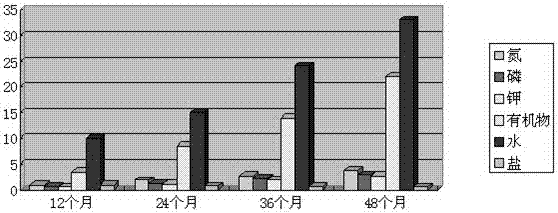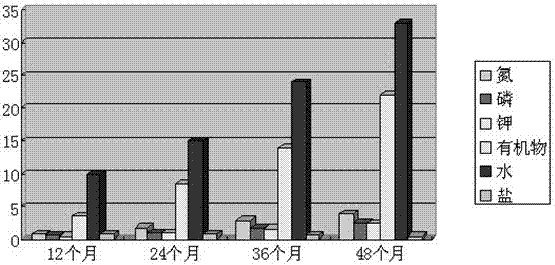Method for controlling stony desertification through biological engineering
A bioengineering and rocky desertification technology, applied in the field of rocky desertification control through bioengineering, can solve the problems of deteriorating agricultural production conditions and ecological environment, difficulty in drinking water for humans and animals, lack of vegetation, etc., so as to inhibit the germination of weeds and rarely breed. Or the effect of spreading pests and diseases, easy to manage
- Summary
- Abstract
- Description
- Claims
- Application Information
AI Technical Summary
Problems solved by technology
Method used
Image
Examples
Embodiment Construction
[0015] 1. Mechanical properties of vetiver root system for soil consolidation
[0016] Use a scale spring tension meter to measure the maximum resistance when the root system of the sample is broken, and use a vernier to measure the diameter of the fractured surface of the root system when the root system is broken, and measure the tensile strength of vetiver, P=4F / πD2 (F-maximum tensile strength force, D-the diameter of the root system at the breaking point), and each sample was repeated 10-28 times. The measurement results are shown in Table 1.
[0017] Table 1 Mechanical properties of vetiver roots for soil stabilization
[0018] diameter (mm) Pull force(kg) Maximum tensile strength (MPa) diameter (mm) Pull force(kg) Maximum tensile strength (MPa) 0.2 0.6 186.69 0.63 2.73 85.6 0.35 1.2 121.9 0.62 2.8 71.4 0.38 1.5 129.2 0.65 2.73 63.3 0.4 1.33 103.4 0.65 2.7 76.7 0.4 1.5 116.7 0.66 2.74 78.2 0.45 1.3...
PUM
 Login to View More
Login to View More Abstract
Description
Claims
Application Information
 Login to View More
Login to View More - R&D
- Intellectual Property
- Life Sciences
- Materials
- Tech Scout
- Unparalleled Data Quality
- Higher Quality Content
- 60% Fewer Hallucinations
Browse by: Latest US Patents, China's latest patents, Technical Efficacy Thesaurus, Application Domain, Technology Topic, Popular Technical Reports.
© 2025 PatSnap. All rights reserved.Legal|Privacy policy|Modern Slavery Act Transparency Statement|Sitemap|About US| Contact US: help@patsnap.com



